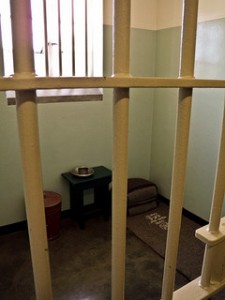How to Cut Prison Costs Without Driving Up Crime?
Putting people in prison helps drive down crime but it’s not cheap, a fact that is troubling some states. So is there a way to cut incarceration rates without spiking crime? Yes, says economist Ben Vollaard in a recent article (long version) arguing in favor of “selective incapacitation”:
The idea of selective incapacitation is to make a distinction between offenders with a high and with a low propensity to commit crime. Those of the high propensity type – the prolific offenders – are responsible for a large share of violent and property crime (Tracy et al. 1990). To them, the default penalties have little deterrent effect. By making the length of a prison sentence conditional upon an offender’s criminal record, enhanced prison sentences can be targeted at this population. After all, by repeatedly breaking the law, these offenders reveal themselves to be of the prolific type (Polinsky and Rubinfeld 1991). Once the harsher sentences apply, the penalties may begin to make a difference, if not through deterrence, then by way of incapacitation in prison.
While California’s attempts at selective incapacitation via its “three strikes” policy have been unpopular and unsuccessful, Vollaard found that a highly selective Dutch version in which “[o]nly offenders with ten or more offenses on their criminal record and a history of being resistant to any short-term rehabilitative programme faced the enhanced prison-terms” was much more effective:
We find that, on average, the sentence enhancements resulted in a 25% drop in acquisitive crime – exactly the types of crimes that the affected offenders committed. Figure 1 illustrates the average impact of the policy in the years after its introduction. We show that the law did not have an impact on violent and sexual crimes, offenses that were rarely committed by the affected offenders. We do not know of any crime policy in the history of the Netherlands that was similarly effective.
In addition, we find the benefits of the policy to exceed the costs by a large margin. These benefits go down rapidly with a more intensive use of the law, however. The marginal crime-reducing effect of convicting another prolific offender to an enhanced prison sentence declines by some 25% when going from low to high use of the law. During 2001-2007, the benefits of the policy remained higher than the costs, even for the cities which used the law most intensively.


Comments